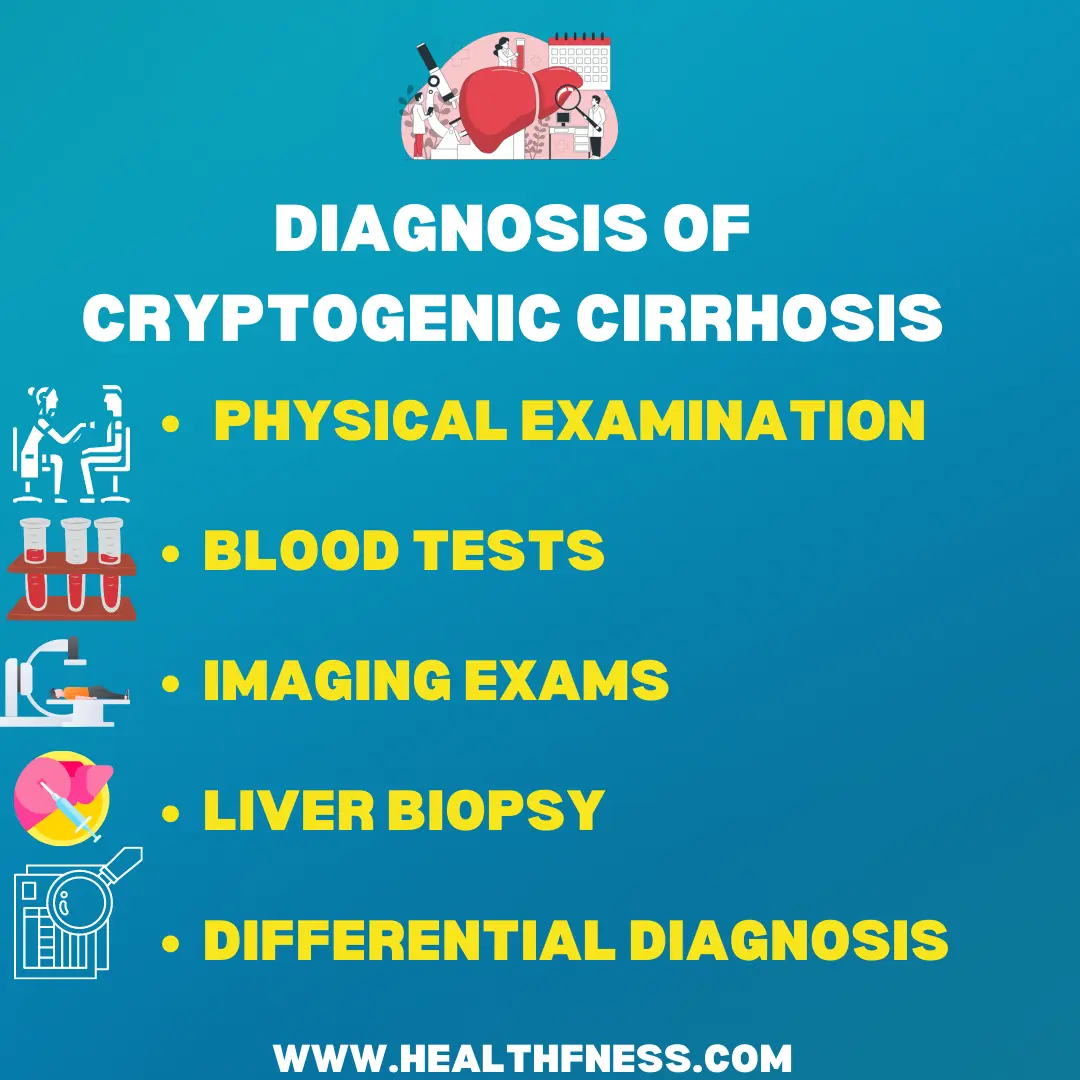Cryptogenic Cirrhosis is a liver disease characterized or recognized by liver cirrhosis in the absence of any identifiable reason. This type of cirrhosis cannot be attributed to chronic alcohol consumption, viral hepatitis, or other known liver diseases. Despite extensive investigations, the cause of cryptogenic cirrhosis remains unknown in most cases. It is estimated to account for approximately 10-20% of all cirrhosis cases.
Cryptogenic cirrhosis is a poorly understood liver disease which means there is no evidence yet discovered on how this disease occurs that poses significant diagnostic and therapeutic challenges. The lack of identifiable causes makes it difficult to prevent or treat the disease effectively. Moreover, the prognosis of cryptogenic cirrhosis is often worse than other types of cirrhosis, as patients may present at later stages of the disease with severe liver dysfunction.
Cryptogenic Cirrhosis ICD 10
ICD 10 is an International Classification Coding System in this system every disease has Its unique code. The ICD 10 code for cryptogenic cirrhosis is K74.69.This code is used to categorize liver cirrhosis that has a mysterious or cryptogenic cause. Other cirrhosis kinds, such as alcoholic cirrhosis (K70) and viral hepatitis-related cirrhosis, are also included in the K74 group (K74.3). The accuracy of diagnosis and therapy for patients with liver disease is increased by using unique ICD-10 codes for various kinds of cirrhosis.
Causes Of Cryptogenic Cirrhosis
As we discussed earlier the cause of the disease is not discovered yet and As the name suggests, cryptogenic cirrhosis is a liver disease of unknown origin. In the majority of cases, extensive investigations fail to identify any underlying cause for liver disease. This makes the disease difficult to diagnose and treat and poses a significant challenge to understanding its pathogenesis.
Some Possible Causes
While the exact causes of cryptogenic cirrhosis remain unknown, several factors and risk factors have been identified. These include:
- Obesity
- Diabetes
- Metabolic syndrome
- Genetics
These factors could be a reason for this disease patients with a family history of liver disease may also be at higher risk for developing cryptogenic cirrhosis at this point we can say that this disease could be genetic.
Relationship With Non-Alcoholic Fatty Liver Disease (NAFLD)
There is a strong association between cryptogenic cirrhosis and non-alcoholic fatty liver disease (NAFLD). NAFLD is a condition characterized by the excessive buildup of fat in the liver in the absence of significant alcohol consumption. It is believed that NAFLD may progress to cryptogenic cirrhosis in some patients, although the exact mechanisms are not fully understood. So if a person has non-alcoholic fatty liver disease there is a strong possibility to develop this disorder also.
But further research is needed to fully understand how and why this disorder develops.
Symptoms Of Cryptogenic Cirrhosis
The symptoms of cryptogenic cirrhosis are similar to those of other types of cirrhosis and may include:
- Fatigue and weakness and headaches
- Jaundice (yellowing of the skin and eyes)
- Ascites (accumulation of fluid in the abdomen)
- Edema (swelling of the legs and ankles)
- Easy bruising and bleeding
- Itchy skin
- Confusion or cognitive impairment
- Spider angiomas (small red spots on the skin)
You May Also Like To Read: Fatty Liver ICD 10: Life Expectancy With Fatty Liver Disease
Diagnosis Of Cryptogenic Cirrhosis
The steps discussed below are needed for the proper diagnosis of cryptogenic cirrhosis.
Medical History And Physical Examination
A thorough medical history and physical examination are the first steps in diagnosing cryptogenic cirrhosis. The doctor will ask about symptoms a person feels and also do a physical examination.
Blood Tests
It is also very important to test to recognize the function of the liver is it functions in the proper way or not. In order to assess liver health and rule out viral hepatitis and other liver disorders, blood tests will be performed. These tests may include liver function tests (LFTs), which check the amounts of the proteins and enzymes the liver produces.
Imaging Exams
Imaging exams like an ultrasound, CT scan, or MRI can be performed to examine the liver and look for cirrhosis symptoms. These tests can identify ascites or vary as well as changes in the liver’s size, shape, and texture.

Liver Biopsy
A liver biopsy may be carried out if cirrhosis is suspected in order to confirm the diagnosis and determine the particular kind of cirrhosis. A small sample of liver tissue is taken during a liver biopsy and viewed under a microscope. The biopsy can be used to assess the extent of liver damage and find any cirrhosis-related underlying causes.
Differential Diagnosis
It is important to distinguish cryptogenic cirrhosis from other types of cirrhosis and liver diseases. Differential diagnoses may include alcoholic liver disease, viral hepatitis, autoimmune liver disease, non-alcoholic fatty liver disease (NAFLD), primary biliary cholangitis, and primary sclerosing cholangitis. In some cases, additional tests such as serologic testing, genetic testing, or imaging may be necessary to make an accurate diagnosis. Because accurate diagnosis is very important for taking decisions about which treatment option best for the patient.
You May Also Like To Read: Understanding Hepatoblastoma: Causes, Symptoms, and Treatment
Treatment For Cryptogenic Cirrhosis
Unfortunately, there is no specific cure for cryptogenic cirrhosis, but treatment options are available to manage the symptoms and complications of the disease. The goal of treatment is to slow the progression of the disease, manage symptoms, and prevent or manage complications. It means we can only slow down the progression of this killer disease but not fully reversed this. Some treatments option available like:
Medications
Several medications can be used to manage the symptoms and complications of cryptogenic cirrhosis. These may include:
- Diuretics: Diuretics help to manage ascites (fluid buildup in the abdomen) by increasing urine output.
- Beta-blockers: Beta-blockers can be used to prevent bleeding from varices (enlarged veins in the esophagus or stomach).
- Lactulose: Lactulose is a medication that can be used to manage hepatic encephalopathy (a neurological complication of liver disease).

Lifestyle Modifications
Besides medications, lifestyle changes are also necessary for better results. These modifications may include:
- Restrict alcohol usage: Even if alcohol use did not lead to cirrhosis, it can exacerbate liver damage and raise the likelihood of complications.
- Eat a balanced Diet: Keeping a balanced diet will help you manage your weight and lower your chances of developing cirrhosis-related problems.
- Exercise Daily: Frequent exercise can enhance liver function and lower the risk of cirrhosis-related consequences.
Avoid using specific drugs Some pharmaceuticals, such as paracetamol and nonsteroidal anti-inflammatory drugs (NSAIDs), might exacerbate liver impairment and should be avoided or used cautiously.
Liver Transplantation
In advanced cases of cryptogenic cirrhosis, liver transplantation may be necessary to manage the disease. Liver transplantation involves removing the diseased liver and replacing it with a healthy liver from a donor. This procedure can improve liver function and quality of life for people with advanced liver disease.
Prognosis And Complications Of Cryptogenic Cirrhosis
Cryptogenic cirrhosis is a serious condition that can lead to several complications and a poor prognosis.
Prognostic Factors
- Age: Older individuals may have a poorer prognosis.
- The severity of cirrhosis: Advanced cirrhosis is associated with a worse prognosis.
- Presence of complications: The presence of complications, such as variceal bleeding or hepatic encephalopathy, can worsen the prognosis.
- Response to treatment: Individuals who respond well to treatment may have a better prognosis.
Common Complications Due To Cryptogenic Cirrhosis
Cryptogenic cirrhosis can lead to several complications, including:
- Ascites: Fluid accumulation in the abdomen
- Varices: Enlarged veins in the esophagus or stomach that can rupture and cause bleeding
- Hepatic encephalopathy: Neurological complications of liver disease
- Liver cancer: Individuals with cirrhosis are at an increased risk of developing liver cancer.
Survival Rate
The survival rate for this disease is not discovered yet but studies suggest that the mortality rate for cryptogenic cirrhosis is similar to other types of cirrhosis. It is difficult to provide exact years of survival rate as it depends upon many factors some studies show that for people with cirrhosis 5-year survival rate is approximately 50%.
Areas for Further Research
Despite advances in the understanding and management of cirrhosis, several areas for further research remain. These include:
- Improved understanding of the pathogenesis of cryptogenic cirrhosis
- Development of novel treatment strategies for cryptogenic cirrhosis
- Identification of prognostic markers to predict outcomes and guide treatment decisions
- Development of non-invasive methods for diagnosis and monitoring of cirrhosis
- Identification of strategies to prevent or delay the progression of cirrhosis and its complications.
FAQS Section:
What is cryptogenic cirrhosis also known as?
Cryptogenic cirrhosis is also known as idiopathic cirrhosis. It refers to liver cirrhosis of unknown cause, where the underlying reason for liver damage remains unidentified.
Why is liver disease called the silent killer?
Liver disease is dubbed the "silent killer" because it often progresses silently without noticeable symptoms until advanced stages, leading to severe damage or failure before diagnosis, making early detection crucial.
Why is cirrhosis a silent disease?
Cirrhosis is silent because it can develop without obvious symptoms until late stages. Liver damage accumulates gradually, often unnoticed, leading to complications like liver failure or cancer without early intervention.
Conclusion
Cryptogenic Cirrhosis is a disease of the liver which is emerging in the absence of any noticeable reason. The ICD 10 code for this disease is K74.69. The exact cause of this disease is unknown but it could be due to obesity, diabetes, metabolic syndrome, and genetics. The symptoms of this disease include weakness, jaundice, edema, and spider angiomas. Diagnosis includes imaging tests and blood tests etc. Treatment options available for this disease are medications, lifestyle changes, and liver transplantation. However, there are many aspects on which research is needed to fully understand the causes of this disease.
Video Credits:
If you have any confusion or questions related to this topic do Let Us Know😊

